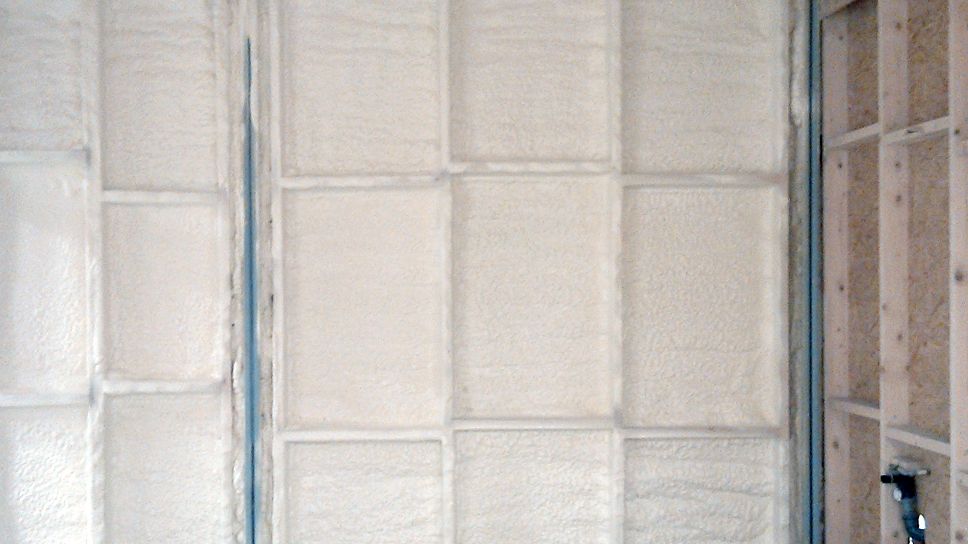Why insulation of walls is important?
The comfort of your house depends to a large extent on how silent it’s inside. If you are tired of screams or laughing of your neighbour next door or if you want to fall asleep after a hard day work on your coach in the living room, but you can still hear private chats of your teenage daughter from the other room, it means your walls are probably not properly insulated.
Partition walls inside your house are subject to the transmission of so-called airborne sounds, i.e. talks, TV or radio sounds or noise generated by the washing machine or fridge. Proper insulation of walls is indicated by the RA1 parameter which should be at least 30 dB – when the wall divides two rooms, and 35 dB – when the wall divides the room and the kitchen or bathroom or the kitchen and the bathroom.
The acoustics of walls is also influenced by sounds transmitted by other walls or ceilings or imperfections resulting from the wall design, whereas impact sounds (e.g. steps) affect the ceiling acoustics. Regardless of the building condition and possibilities of sound transmission by other structural members, the RA1 indicator should remain unchanged.
Open cell thermal and acoustic polyurethane foam designed for walls features a weighted sound absorption coefficient (αw) of 0.55(L) and a weighted specific acoustic insulation coefficient of Rw = 23-27 dB. Depending on the structure, a plasterboard wall with polyurethane foam filling can achieve Rw parameters of 30-57 dB.
Things to remember when insulating partition walls
 By definition, partition walls inside your flat or house are lighter. Although they influence the building structure, their position can be changed to a certain extent without a necessity to consult the constructor.
By definition, partition walls inside your flat or house are lighter. Although they influence the building structure, their position can be changed to a certain extent without a necessity to consult the constructor.
A decisive factor affecting acoustic insulation of the wall is its weight. Therefore, the best performance is achieved by massive walls such as concrete, ceramic brick and walls made of lime and sand blocks. Another factor is tightness, removal of empty spaces in connection points, covering metal fasteners with dampening material.
A popular solution for partition walls of high acoustic parameters are sandwich walls designed in such a way not to excessively load the structure and – if metal fasteners are present – to ensure their horizontal shift. Metal fasteners should not penetrate the whole wall thickness. The most effective acoustic insulation is when the space between the walls is tightly sealed with a dampening material.
Good acoustic insulation depends on many factors. Professional assessment of the acoustic insulation condition involves a few parameters such as sound insulation properties of applied partition walls, degree of flanking sound transmission and sound transmission by ventilation ducts, surfaces above suspended ceilings, etc. Acoustic insulation of a partition wall is always lower than that determined in a laboratory.
Acoustic insulation properties are defined for the whole partition wall. Mineral wool or polyurethane foam can serve as a dampening material. It should be emphasised that there’s a number of bays in walls (e.g. electrical switchboard, flush-mounted electrical boxes) and systems (e.g. water, heating, gas, ventilation, wiring) which reduce acoustic insulation.
What is more, a frequent insulation mistake is to use insulating material of insufficient thickness and leave spaces inside the wall which reduce acoustic insulation. The only system which allows for complete and seamless filling of installation spaces is polyurethane foam.
How to insulate partition walls with polyurethane foam?
We can appreciate the meaning of good wall acoustics in a room of poor partition wall acoustic parameters. Particularly problematic are partition walls made of cellular concrete or separating a room of a heavy noise level (e.g. corridor, lift shaft, bathroom, heavy traffic spaces).
To solve this issue, a so-called ‘prewall’ can be built on the inside. This structure is designed in a similar way as partition walls covered by plasterboards. Basic covering of 7.5 cm in thickness (5 cm of polyurethane foam) can reduce the noise level by approx. 13-15 dB. Such wall will be very tight and provide good acoustic and thermal insulation – foam serving as a filler of partition walls is able to reach the smallest gap and prevent sounds from being released to the outside. Foam can also be used as a new insulating element to replace the existing filler of the partition wall by polyurethane foam.
New structure handling
Following the same principle, a completely new partition wall can be mounted inside the room. A structure of steel sections is very light and so is an open cell foam filler. It is an advantageous solution due to the ceiling load, much safer than designing masonry structures. Last but not least, by maximising benefits of the system partition walls and foam spraying, a partition wall can be built in one day only – foam quickly solidifies and is extremely easy to use.
The main advantage of foam in room insulation is its durability, space filling tightness and resistance to physical and chemical changes. Foam is not subject to any deformation and, above all, you don’t have to be afraid that it will subside over time, just as other insulating materials.

 This website uses cookies. By using this website, you consent to the use of cookies in accordance with your browser settings.
This website uses cookies. By using this website, you consent to the use of cookies in accordance with your browser settings.